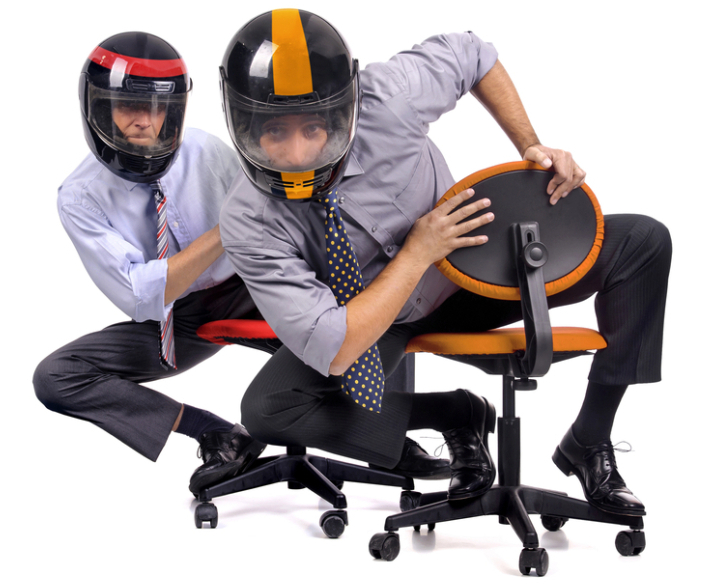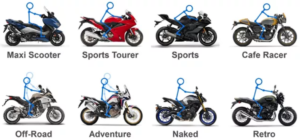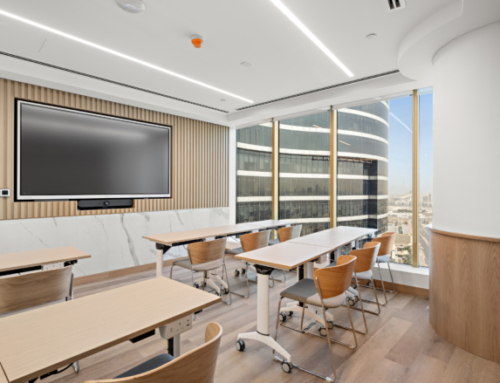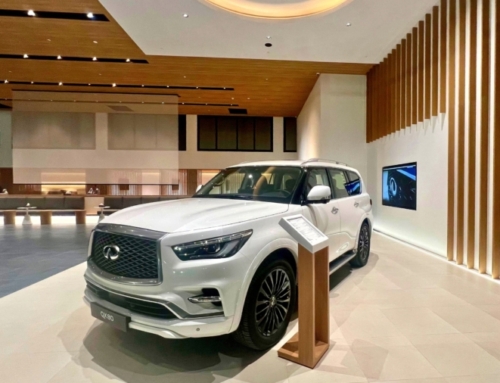From the office to the track: ergonomics in the world of motorcycles

It’s not long until we head out to Utah with the Vendetta Racing team for the debut of their supremely efficient, ergonomically-designed land-speed bike. The bike has been custom-built to travel 200 mph in a straight line in a bid to break two world records. At ChelseaGREEN, we’re passionate about the power of ergonomics in the workplace, and fascinated by how it impacts other walks of life. Ergonomics is about much more than monitor arms and adjustable office chairs, so to celebrate sponsoring the Vendetta team, we’re exploring what it means in motorbike racing.
Webster’s Dictionary defines ergonomics as “an applied science concerned with designing and arranging things people use so that the people and things interact most efficiently and safely.” For us, that’s missing the comfort element; we like to think of ergonomics as comfort + ease + efficiency when talking about the standard workplace. It’s also important to note that the concept was coined long before people knew what an office was. The term was originally derived from the Greek words “ergon” meaning work and “nomos” meaning natural law.
What does this look like in motorbike racing?
 Motorcycle ergonomics is crucial for several reasons. It reduces discomfort, makes the riding experience more enjoyable, and enhances performance. As ergonomics is a science, there is a standard set of guidelines and measurements that should be used when fitting a motorcycle to its rider – the better they fit, the more efficient they are, and the faster they can go. These guidelines cover aspects like the distance between the handlebars, seat, pegs/gear shift, and the shape of the seat, shape and material of the grips. That said, it’s not one-size-fits-all and the fixed measuring points are a compromise based on the type of bike and its intended functionality. Different types of racing mean different shapes of bikes and different body positioning.
Motorcycle ergonomics is crucial for several reasons. It reduces discomfort, makes the riding experience more enjoyable, and enhances performance. As ergonomics is a science, there is a standard set of guidelines and measurements that should be used when fitting a motorcycle to its rider – the better they fit, the more efficient they are, and the faster they can go. These guidelines cover aspects like the distance between the handlebars, seat, pegs/gear shift, and the shape of the seat, shape and material of the grips. That said, it’s not one-size-fits-all and the fixed measuring points are a compromise based on the type of bike and its intended functionality. Different types of racing mean different shapes of bikes and different body positioning.
What does this mean for the recreational motorbike rider? If you’re going for a day trip or using the bike for day-to-day transportation, comfort and safety are higher on the list of priorities. Ergonomically speaking this could mean seat modifications, such as shaping, height, thickness, and material. It can also mean a change of handlebar position, size or material for the hand grip.
Built for speed

Things change dramatically when speed is the ultimate goal, as it was for Vendetta Racing and the development of their land speed drag bike.
One of the most noticeable aspects of the bike is that the rider lies face down in a prone position with his torso on the seat, rather than being upright, and the pegs are placed behind him. The bike sits low to the ground to minimise wind drag and its measurements have been meticulously matched to the rider. After testing, several things were modified; for example, the pegs were moved further back and the chin position too low, so a small pad was applied for better visibility.
That’s the beauty of ergonomics. Its principles are clear but there is always room for flexibility and creativity to benefit the individual and their specific needs.





